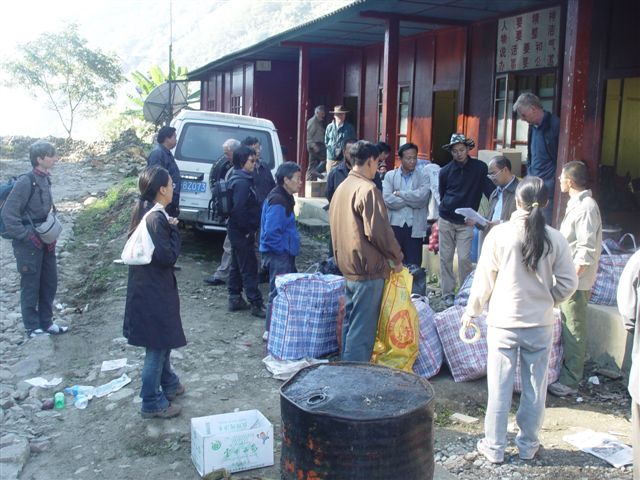A 25-strong expedition team recently concluded an autumn fieldtrip to the Dulong River Valley in the northwestern corner of southwest China's Yunnan Province.
The 32-day-long survey is part of a much larger five-year biotic survey of the Gaoligong Mountain range supported by the US National Science Foundation and the CAS Kunming Institute of Botany (KIB). Led by Prof. Li Heng of KIB, the international consortium included entomologists and botanists from the CAS Institute of Zoology in Beijing, Hunan Normal University, the US Californian Academy of Sciences, the UK Royal Botanic Garden Edinburgh and University of Marburg in Germany.
The team, which is divided into two detachments of botany and entomology, is focused on the bio-diversity along the Dulong River valley located at the western slope of the northern part of the Gaoligong Mountains. Unlike much of the surrounding areas, the forests of the Gaoligong Mountains have remained largely intact because of their remote location and are known to be one of the hottest biodiversity spots on earth.
A bumper harvest features the field expedition A total of 14,812 specimens in 2,119 entries of vascular plants were collected by botanical group from the trekking survey, the highest record ever scored in any similar surveying activities in the Gaoligong Mountains.
According to the agreement reached by the participants of the expedition, the specimens are to be mainly stored in KIB and part of them will be exchanged with the foreign participants and the herbarium under the Gongshan County's administration of natural reserves. Another complete set of collected specimens will be sent to peer taxonomists for identification.
The sampled plant seeds contain a lot of new recordings in the Dulong River valley and Gaoligong Mountains such as Sparganium sp, Aralia armata, Aralia stipulate, Schefflera clarkeana, including some endemic species in Dulong River. In the middle and upper reaches of the river valley, a large stretch of forests Pinus wallichii was discovered.
In addition, the expedition collected some 2,000 entries of mosses, including some new taxonomic recordings like a primitive moss Takakia certophylla (Mitt.) Grolle and many species in Hookeriaceae. In the collection of lichen specimens, almost all samples are new recordings in the Mountains, such as Horikawaella subacuta, Lobatiriccardia sp. , Scapania contorta Mitt. Iand Lophocolea sikkimensis.
In entomology, the teammates succeeded in collecting more than 6,000 insects including 2,000 spiders and 3253 beetles and 1,500 individuals in other kinds of arthropods. Among the beetle specimens, at least more than 40 are new species as the River was the first time to receive entomologist visits. To their surprise, the insect experts discover that some endemic beetles in Hainan Island may be found in the northern slope of the Mountains. They believe this anomaly is only to be explained by the displacement of the tectonic plates.



